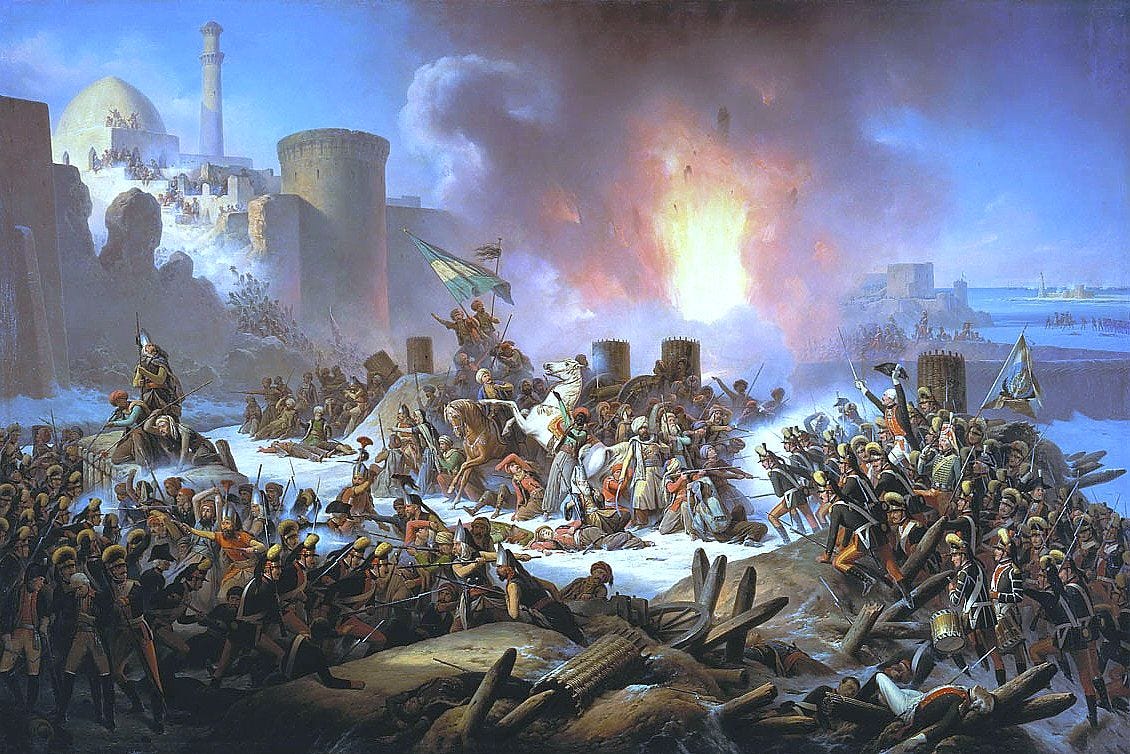More Siege Paintings Should Have Fire
The work of January Suchodolski
No, not the time when the ghost of Peter the Great drove Russian expansion under his niece, Anna Ioannovna. The other time, when Catherine the Great resumed the Russian imperial project in the Black Sea. American naval captain John Paul Jones took part as a rear admiral in the Russian Navy to cover the landings. Yes, the time when the Ottoman empire los…
Keep reading with a 7-day free trial
Subscribe to Polemology Positions to keep reading this post and get 7 days of free access to the full post archives.


